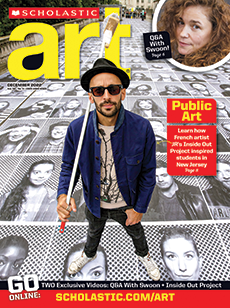When Wayne Thiebaud makes a painting, he begins by thinking about the composition. He knows there are countless ways to capture a scene by playing with elements of art including texture, light, and perspective.
Thiebaud paints still lifes, portraits, and landscapes, each a traditional genre, or category of art. Working within these established genres gives the artist freedom to experiment with fresh, new ways of constructing his compositions.
When Wayne Thiebaud plans an artwork, he starts with the composition. The artist paints still lifes, portraits, and landscapes. Each of these is a traditional genre, or category of art. Thiebaud follows some of the rules of these genres. But he also experiments with new ways of using perspective, light, and texture.
